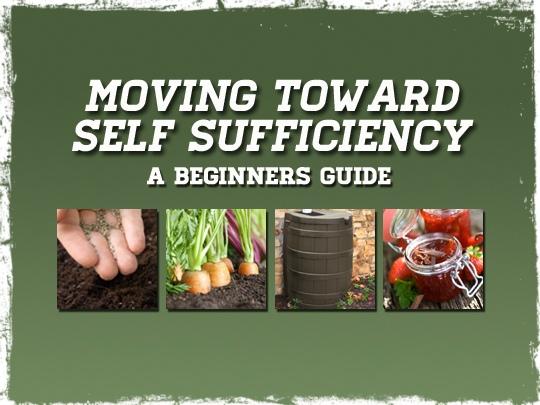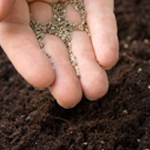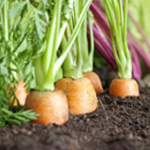
There are certain skills and knowledge that you would not use until disaster strikes, but on the other hand, there are things that can be and should be done before disaster does strike. One of those things that should be ongoing is gardening. Keep in mind during a crisis you will not be able to run to the nearest home and garden center. You will need the skills, tools and materials for gardening well before something happens.
Prepping is not just about stockpiling supplies, it is also about gathering the tools, materials and equipment to sustain life for an extended period. This means that at some point you must have the ability to produce your own food.
Begin Now Planning For Tomorrow
The essentials for gardening are good soil or some other form of growing medium, quality seeds, and nutrients, certain tools, materials and patience. It will certainly help to have experience and certain skill sets but nature has the technique down pretty well. Start by paying attention to how nature does it. Then begin gathering facts about frost dates, types of plants and maturity dates so you can match your plants to your growing season. Then, and this is important, pick out fruits and vegetables that your family will actually eat.
You can of course if you have the space raise food that can be used for bartering/trading when the SHTF. You will likely have to can the foods in most cases so keep this in mind when considering space for foods your family will eat and storage for foods for bartering.
Results Are Not Overnight
 Establishing a garden takes time, so you will need enough emergency supplies to sustain you until your garden begins producing. There are never any guarantees when it comes to gardening.
Establishing a garden takes time, so you will need enough emergency supplies to sustain you until your garden begins producing. There are never any guarantees when it comes to gardening.
Things that can cause a poor harvest are inferior seeds, poor weather conditions, lack of rainfall/water, not enough nutrients, and insects/pest to include grazing animals such as rabbit, deer and others.
The quality of your seeds plays a big role. Seeds stored at room temperature (the range from 68 to 74ᵒF is widely considered room temperature) will typically have a shelf life of three years from date of processing the seeds after harvesting them. The garden center may have had the seeds in their warehouse for a year or more and you may have purchased them last spring. Essentially, you do not know how old your seeds are unless you harvested them yourself.
If the seeds were stored at 10 degrees cooler than room temperature, this would have doubled their life span to six years. This means seeds stored at 52ᵒF would have an approximate shelf life of 12 years.
Some of you may be concerned about your garden being a target of marauders during a crisis and this is a valid concern. A crisis can create a paradox because on one hand to survive, you will need to stay close to your renewable food source and on the other hand, you may be forced to evacuate, which means you have lost your food source.
To ensure you always have the means to raise your own food you should build up a seed bank using heirloom seeds. If you rely on harvesting seeds every year from the plants, you do not have a surplus of seeds, and you do have to evacuate this means you have may lost your seeds for the next season if you cannot ever return.
What to Grow
 Berries, fruits and vegetables is how your food production can be broken down. Strawberries, blackberries, raspberries and blueberries for example can be grown virtually anywhere and in some cases, you may even have a yield during the first season.
Berries, fruits and vegetables is how your food production can be broken down. Strawberries, blackberries, raspberries and blueberries for example can be grown virtually anywhere and in some cases, you may even have a yield during the first season.
Berries usually need to become established however for several seasons before you have peak harvests. Fruit trees would be a long term-survival solution because of the number of years needed to establish an orchard. Most of your vegetables of course are annuals and must be planted each season.
Unless you are raising corn for livestock, it is not a good crop for small spaces. Corn requires considerable land space to yield enough for immediate consumption and have a surplus for preservation. Additionally, other vegetables cannot be placed close by because once corn reaches its height it would shade any plants close to the ground.
Ideally, you would have tilled up your garden spot in the previous fall to allow the land to lay fallow (unseeded) over the winter so you can achieve what is called nutrient balance. This practice dates back to when humans first started raising crops.
When farmers had the land available, they would allow certain sections of farmland to lay fallow for a growing season so the soil could regenerate itself. Insects and natural composting of leaves and other organic debris would refresh or balance the soil. Crop rotation was and still is important but land is at a premium and most people do not have enough space to let sections of land sit unseeded for a growing season.
One solution to maintaining good soil is by composting and adding the compost to your soil and not planting the same crop in the same place for more than three years in a row. Group and rotate by what is considered fruits such as tomatoes, cucumbers, peppers, eggplant, squash and then by leafy such as lettuce, cabbage, spinach, broccoli, romaine and so on. The last group would be root vegetables such as potatoes, turnips, radishes, beets, and onions for example.
Composting
Composting is an important part of gardening and it takes time to develop good compost so do not expect to toss banana peels, coffee grounds and potato skins in the bin all week and have good compost ready for the weekend.
Essentially any organic material can be composted but you should not compost meats, raw or otherwise, dairy products and do not compost bones or animal/human waste. Meats and other proteins will decompose and cause odor, draw insects, rodents and predators to the area and can cause deadly bacteria to breed and spread.
Organic materials such as yard debris (only non-poisonous plants and plants that are not diseased) and table scraps such as any fruits, vegetables, coffee grounds, eggshells, teas leaves and tea bags are ideal. Some people even add manure from herbivores (cows, horses) to their compost bin. The high grass content of the manure can act as a quick start to get your compost going.
It may take several seasons of composting to get to the point where you have enough to fertilize your garden but this will be necessary when something happens and you do not have access to commercially produced fertilizers.
Water
 Watering a garden is a necessity and it must be part of your planning. You simply cannot count on enough rainfall to sustain your garden. Watering when you have to pay for the water can be cost prohibited so it is important you establish water collection methods. Gathering rainfall from your roof is the most efficient and cost effective way of watering your plants. Have rain barrels positioned so they can collect rain runoff from your roof.
Watering a garden is a necessity and it must be part of your planning. You simply cannot count on enough rainfall to sustain your garden. Watering when you have to pay for the water can be cost prohibited so it is important you establish water collection methods. Gathering rainfall from your roof is the most efficient and cost effective way of watering your plants. Have rain barrels positioned so they can collect rain runoff from your roof.
Some also recommend using gray water (bath water, used dishwater) from the home to water with but this has drawbacks and is not an ideal water source for plants. Plants absorb whatever is in the water into their roots, bathwater can contain bacteria from feces, and it can in some cases collect in the plant and this is why you should never plant your garden over the drain/leach bed of your septic system. Gray water may also contain chemicals harmful to you and the plants.
You can however use gray water as an indirect way to increase ground moisture by distributing the water over the ground away from the plants so the water is allowed to percolate through the ground. Soil is an ideal filtration medium and it is used to filter black water from your septic system.
You may have to fence off your garden area to keep animals from feasting on your crops. Deer, rabbits and other animals are always looking for all you can eat buffets.
Points to Remember
Know when your frost dates are. It is easy to become impatience, so hurrying to get your seedlings in the ground can destroy all of your hard work in a single night if a frost occurs. Many gardeners start their seeds inside their home 6-8 weeks before the last expected frost date. This gives vegetables with a long maturity date a head start and means you can increase and stagger yields.
You do not want your entire crop coming on at once unless you are set up to begin canning and preserving the surplus, which can be laborious with large amounts. Instead, have the vegetables come on at various times so you can do a little at a time. Too much surplus means you have to rush to prevent the vegetables from rotting.
To stagger crops start some plants inside a week apart and when you plant the seedlings, you can then sow seeds in the ground. This also ensures you have food for daily consumption, and are not rushed to can everything at once.
Purchase quality seeds and make sure you know the process date so you can calculate the shelf life.
Do not be afraid to grow food in containers on your porch, patio or even in your sunroom. You can build containers using landscape timbers as well. Build as large as needed and fill the box with garden soil/topsoil. These boxes can be placed almost anywhere and it means you do not have to till up so much area around your home.
Virtually any fruit or vegetable can be grown in a container/box to include many root vegetables such as potatoes. Growing this ways increase the growing space around the home.
Some claim it takes up to two acres of farmland to sustain a family of four but this includes raising certain livestock on those two acres as well. How much of those two acres are needed to raise enough crops is hard to determine. Much depends on the length of the growing season, types of plants, soil composition and so on. However, one thing is obvious, the more space you utilize the more yields you will have.
Growing the right crops in the right place can maximize yield with limited space. Additionally if you do not want it to be obvious you are raising large amounts of food then containers scattered about will make it more difficult to detect you have a garden.